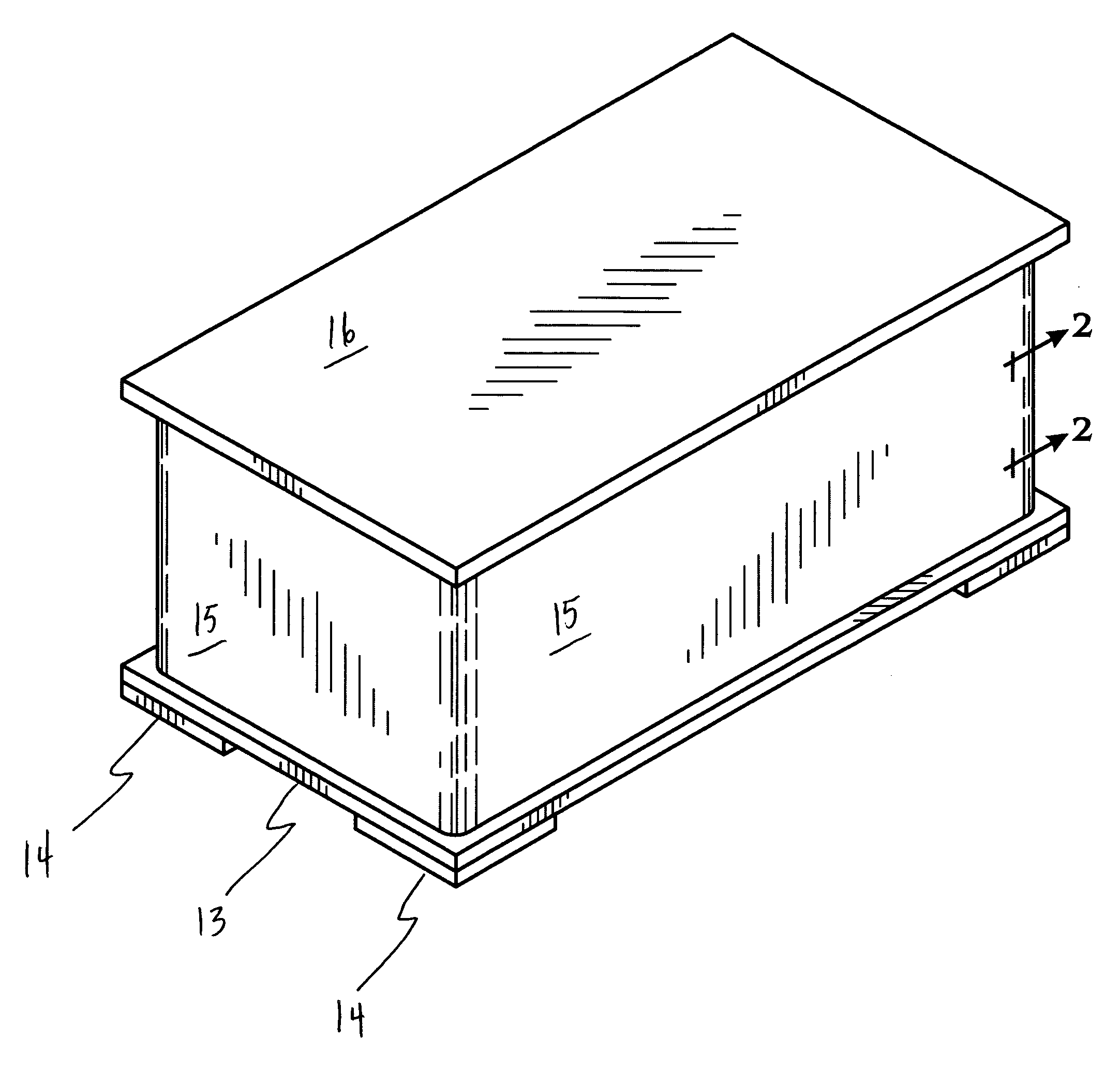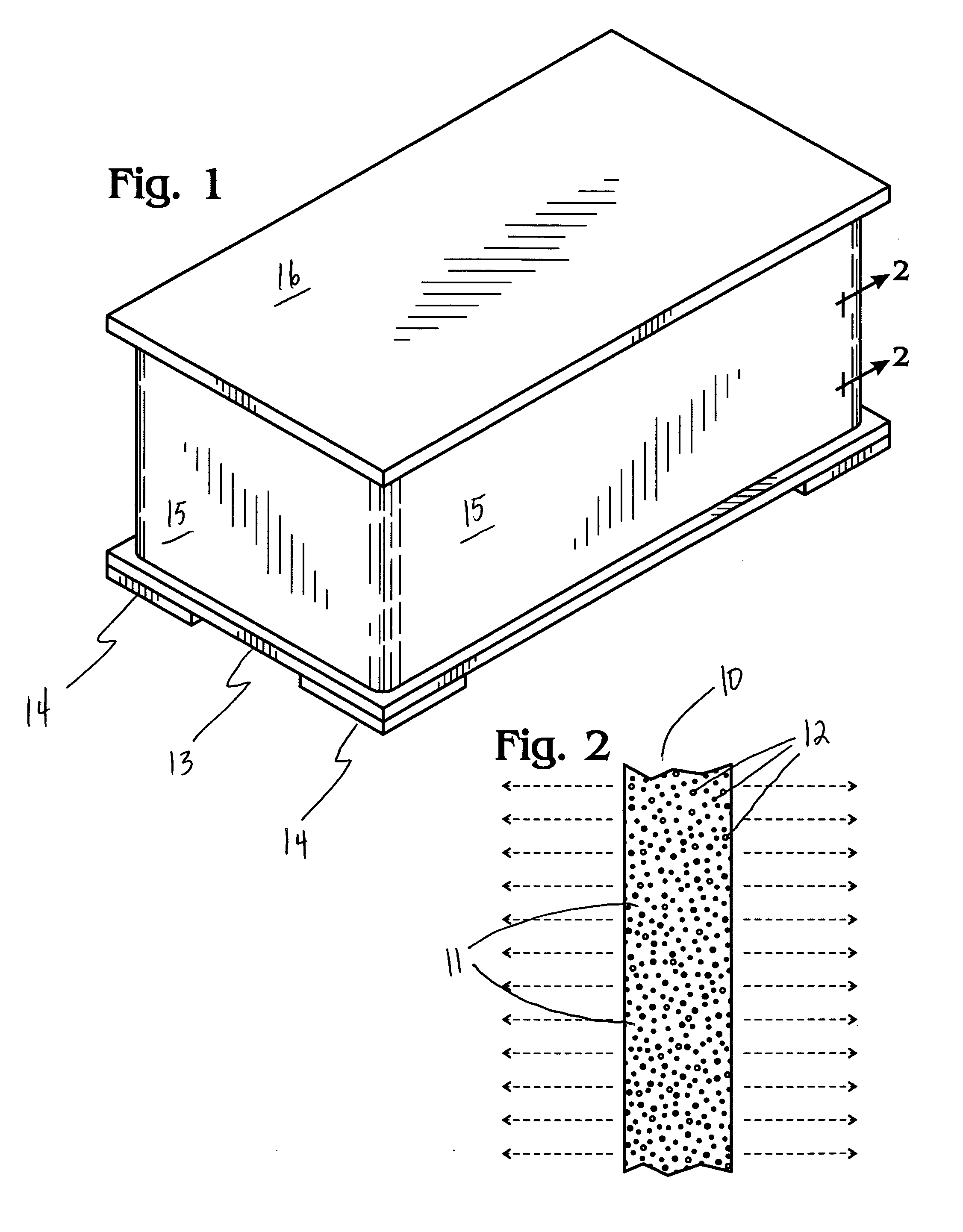Luminous urn
a luminous, urn technology, applied in the field of urns, can solve the problems of inability to envisage stone structures difficult to meet the needs of people, etc., and achieve the effect of reducing cost and efficient construction
- Summary
- Abstract
- Description
- Claims
- Application Information
AI Technical Summary
Benefits of technology
Problems solved by technology
Method used
Image
Examples
Embodiment Construction
[0013] In its preferred embodiment, the urn is made from pieces of luminescent solid surface material 10 affixed together with adhesive or chemical bonding. The base 13 is a horizontal rectangular piece with four legs 14 affixed. Each leg 14 has one 90-degree angle. The 90-degree corner of each leg 14 is matched flush with the corners of the rectangular base 13. The base 13 is placed with its legs 14 facing down.
[0014] Four vertical pieces make up the vertical sides 15 of the box shaped urn. In the preferred embodiment, the width of each vertical side 15 is slightly smaller than the side of the base 13 to which it will be affixed. These vertical sides 15 are affixed to each other and to the base 13. The base 13 forms the bottom of the urn.
[0015] A rectangular piece large enough to simultaneously touch the top edge of the vertical sides 15 of the urn forms the top 16. The size of the top 16 prevents it from falling into the urn. A protrusion is affixed to the bottom surface of the ...
PUM
 Login to View More
Login to View More Abstract
Description
Claims
Application Information
 Login to View More
Login to View More - R&D
- Intellectual Property
- Life Sciences
- Materials
- Tech Scout
- Unparalleled Data Quality
- Higher Quality Content
- 60% Fewer Hallucinations
Browse by: Latest US Patents, China's latest patents, Technical Efficacy Thesaurus, Application Domain, Technology Topic, Popular Technical Reports.
© 2025 PatSnap. All rights reserved.Legal|Privacy policy|Modern Slavery Act Transparency Statement|Sitemap|About US| Contact US: help@patsnap.com


